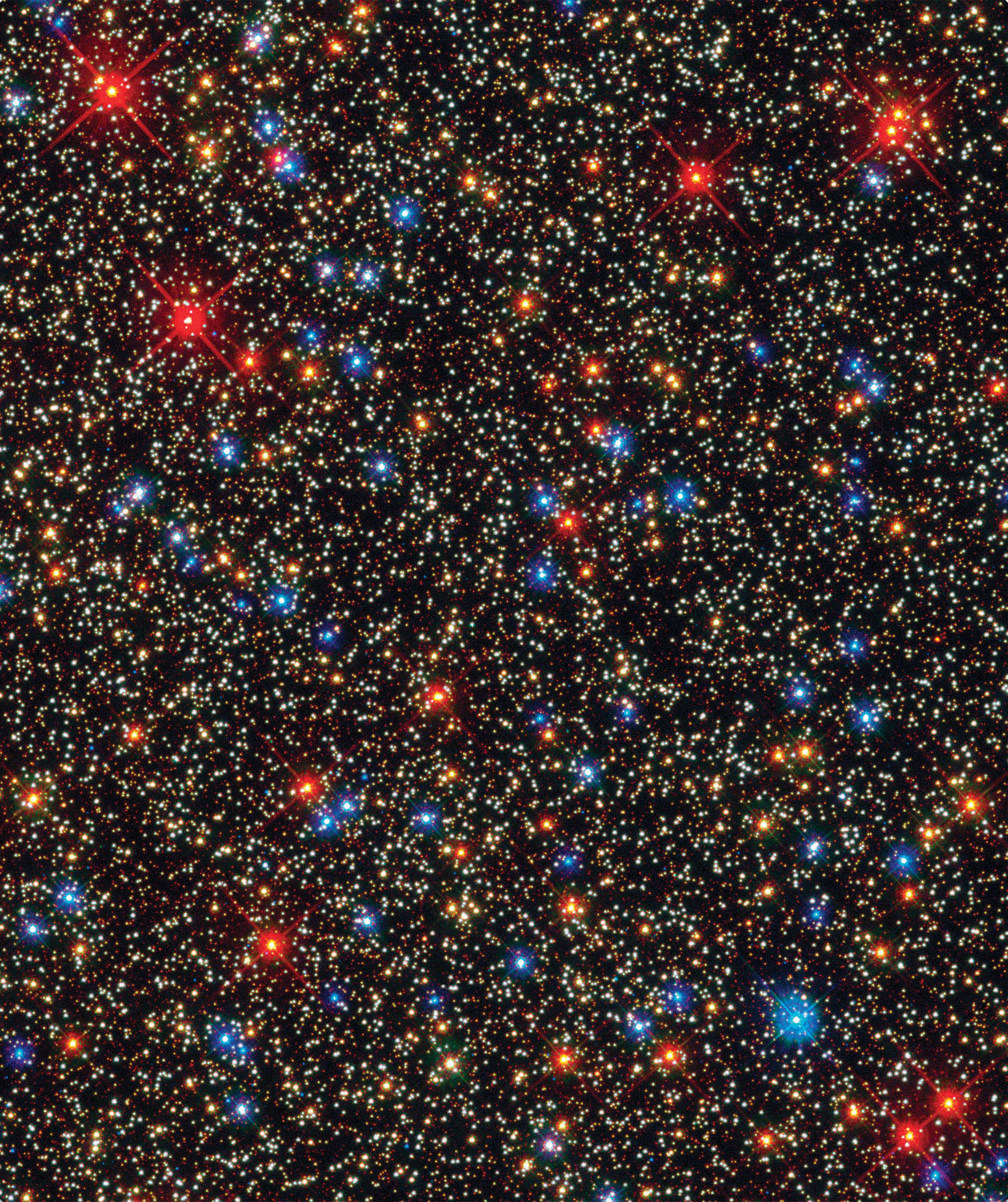CHAPTER
17

Stars come in various colors from red to blue. Different temperatures lead to different colors, and stars come in many sizes and brightness. This is the central region of the star cluster Omega Centauri, which is about 15,800 ly from Earth.
The Nature of the Stars
LEARNING GOALS
By reading the sections of this chapter, you will learn
| 17–1 | How we can measure the distances to the stars |
| 17–2 | How we measure a star’s brightness and luminosity |
| 17–3 | The magnitude scale for brightness and luminosity |
| 17–4 | How a star’s color indicates its temperature |
| 17–5 | How a star’s spectrum reveals its chemical composition |
| 17–6 | How we can determine the sizes of stars |
| 17–7 | How H-R diagrams summarize our knowledge of the stars |
| 17–8 | How we can deduce a star’s size from its spectrum |
| 17–9 | How we can use binary stars to measure the masses of stars |
| 17–10 | How we can learn about binary stars in very close orbits |
| 17–11 | What eclipsing binaries are and what they tell us about the sizes of stars |
To the unaided eye, the night sky is spangled with several thousand stars, each appearing as a bright pinpoint of light. With a pair of binoculars, you can see some 10,000 other, fainter stars; with a 15-cm (6-in.) telescope, the total rises to more than 2 million. Astronomers now know that there are more than 100 billion (1011) stars in our Milky Way Galaxy alone.
But what are these distant pinpoints? To the great thinkers of ancient Greece, the stars were bits of light embedded in a vast sphere with Earth at the center. They thought the stars were composed of a mysterious “fifth element,” quite unlike anything found on Earth.
Today, we know that the stars are made of the same chemical elements found on Earth. We know their sizes, their temperatures, their masses, and something of their internal structures. We understand, too, why the stars in the accompanying image come in a range of beautiful colors: Blue stars have high surface temperatures, while the surface temperatures of red and yellow stars are relatively low.
How have we learned these things? How can we know the nature of the stars, objects so distant that their light takes years or centuries to reach us? In this chapter, we will learn about the measurements and calculations that astronomers make to determine the properties of stars. We will also take a first look at the Hertzsprung-Russell diagram, an important tool that helps astronomers systematize the wealth of available information about the stars. In later chapters, we will use this diagram to help us understand how stars are born, evolve, and eventually die.